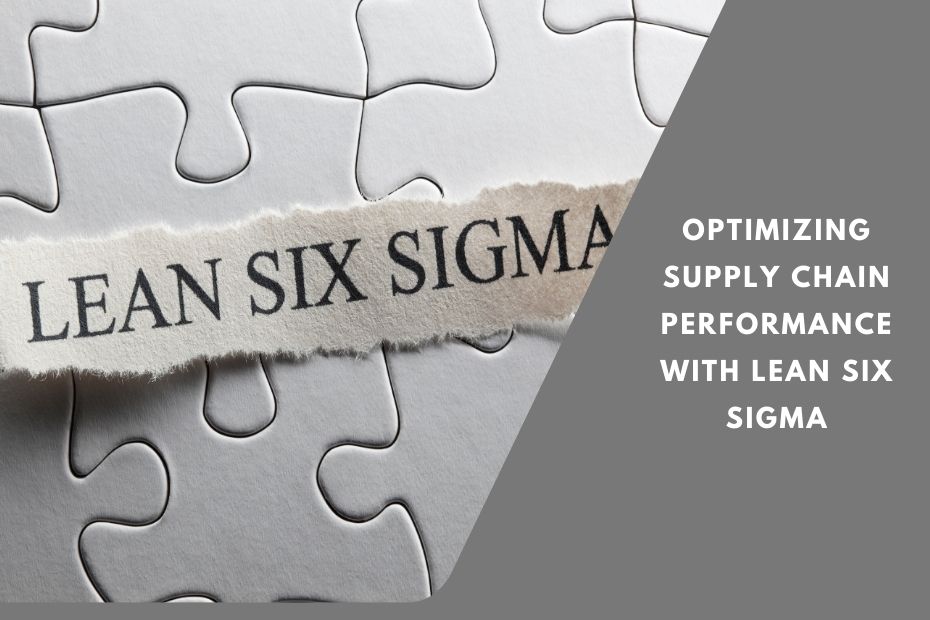Supply chains are at the heart of every business, and optimizing their performance is essential for staying competitive. Over the years, I’ve seen firsthand how Lean Six Sigma has transformed supply chain operations for organizations, delivering measurable improvements in efficiency, quality, and customer satisfaction. By blending Lean’s focus on eliminating waste with Six Sigma’s precision in reducing defects, this methodology addresses inefficiencies at every stage of the supply chain. Let me walk you through how Lean Six Sigma can make a tangible difference in supply chain performance.
Understanding Lean Six Sigma
Lean Six Sigma combines two proven methodologies into a single framework. Lean focuses on identifying and eliminating non-value-added activities, while Six Sigma aims to reduce variability and improve process quality. Together, they provide a structured approach for achieving efficiency and consistency in operations.
In supply chains, I’ve seen how this methodology helps companies tackle common challenges like delayed shipments, excess inventory, and quality defects. For example, one project I worked on used Lean Six Sigma to streamline inventory management, which reduced storage costs and improved order accuracy. It’s an approach that’s both practical and powerful, yielding results that benefit the entire operation.
Benefits of Lean Six Sigma in Supply Chain Management
The benefits of Lean Six Sigma extend across every facet of supply chain management. Improved efficiency is often the most noticeable result. When waste is eliminated and processes are streamlined, bottlenecks disappear, and lead times shrink. This has a direct impact on costs—reducing unnecessary steps and optimizing workflows can significantly lower operational expenses.
Another key benefit is enhanced quality control. By identifying the root causes of defects, Lean Six Sigma ensures consistent product quality, which translates to higher customer satisfaction. One company I collaborated with used this approach to improve delivery accuracy by 20%, leading to fewer customer complaints and stronger relationships. Additionally, Lean Six Sigma supports sustainability goals by reducing waste, which resonates with customers and partners alike.
Implementing Lean Six Sigma in Supply Chains
Applying Lean Six Sigma to supply chains requires a methodical approach. I always start with the DMAIC framework: Define, Measure, Analyze, Improve, and Control. It’s a straightforward process that ensures each step is deliberate and focused.
In one project, we began by defining clear objectives—specifically, reducing lead times and improving supplier performance. The measurement phase involved collecting data on delivery times and defect rates, which gave us a baseline for tracking progress. During the analysis phase, we used Value Stream Mapping to pinpoint inefficiencies in the shipping process. This led to targeted improvements, such as consolidating shipments and optimizing routes. Finally, we implemented controls, including automated tracking systems, to maintain these gains over time.
Real-World Applications of Lean Six Sigma
I’ve worked on several projects where Lean Six Sigma delivered remarkable results. One notable example was a manufacturing company struggling with production delays and high defect rates. By applying Lean Six Sigma principles, we identified inefficiencies in their assembly line and made changes that reduced production times by 30% while improving quality.
Another success story involved a logistics provider aiming to optimize its freight operations. By addressing inefficiencies in route planning and vehicle utilization, we reduced fuel costs by 15% and cut delivery delays by half. These are just a few examples of how Lean Six Sigma can address specific challenges and deliver substantial improvements in supply chain performance.
Challenges in Implementing Lean Six Sigma
No methodology is without its challenges, and Lean Six Sigma is no exception. One common issue I’ve encountered is cultural resistance. Employees are often hesitant to change established processes, especially if they’re not fully aware of the benefits. Overcoming this requires clear communication and leadership support to ensure everyone is aligned and motivated.
Another challenge is the resource commitment required for implementation. Training employees, investing in tools, and dedicating time to process improvement can strain resources in the short term. However, the long-term benefits far outweigh these initial costs. Sustaining improvements is also critical, which is why I always emphasize the importance of ongoing monitoring and fostering a culture of continuous improvement.
Tools and Techniques for Lean Six Sigma
Several tools play a key role in Lean Six Sigma projects, and I’ve found them indispensable in achieving success. Value Stream Mapping is one of my go-to techniques for visualizing the flow of materials and information, helping identify waste and inefficiencies. Root Cause Analysis, such as the 5 Whys, is another valuable tool for drilling down into the underlying causes of recurring issues.
Statistical Process Control is useful for monitoring process stability and ensuring operations remain within acceptable limits. Kanban systems, which facilitate just-in-time production, have also proven effective in reducing inventory waste while maintaining smooth workflows. Using these tools strategically ensures that improvements are both impactful and sustainable.
Future Trends in Lean Six Sigma for Supply Chains
The future of Lean Six Sigma in supply chains is bright, especially with advancements in technology. I’ve seen how integrating tools like artificial intelligence and predictive analytics enhances the methodology’s effectiveness. For example, AI can analyze large datasets to identify trends and predict demand, allowing businesses to allocate resources more efficiently.
IoT devices are also transforming supply chains by providing real-time data on shipments and inventory. This level of visibility makes it easier to detect and address issues before they escalate. Combining these technologies with Lean Six Sigma principles creates a powerful synergy that drives continuous improvement and agility in supply chain operations.
Key Benefits of Lean Six Sigma in Supply Chains
- Improved efficiency by streamlining processes and reducing delays.
- Cost savings through waste elimination and resource optimization.
- Enhanced quality control with fewer defects and consistent outcomes.
- Stronger customer satisfaction via timely deliveries and reliable products.
- Sustainability by reducing waste and supporting eco-friendly practices.
In Conclusion
Lean Six Sigma is more than just a methodology—it’s a game changer for supply chain performance. By focusing on eliminating waste and reducing defects, it delivers improvements that are both measurable and sustainable. I’ve seen its impact firsthand, from reducing lead times to enhancing product quality and cutting costs. As businesses face increasing pressure to adapt and innovate, Lean Six Sigma offers a proven path to success. Whether your goal is to streamline operations, boost customer satisfaction, or achieve sustainability, this methodology provides the tools and framework to make it happen.










